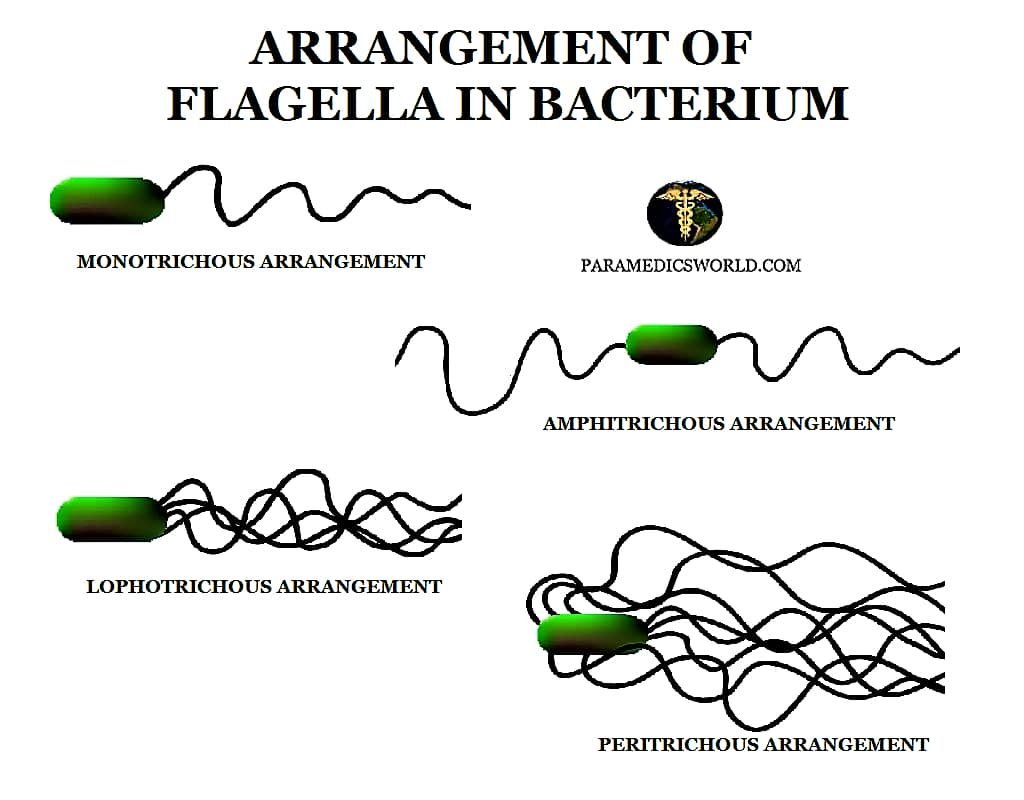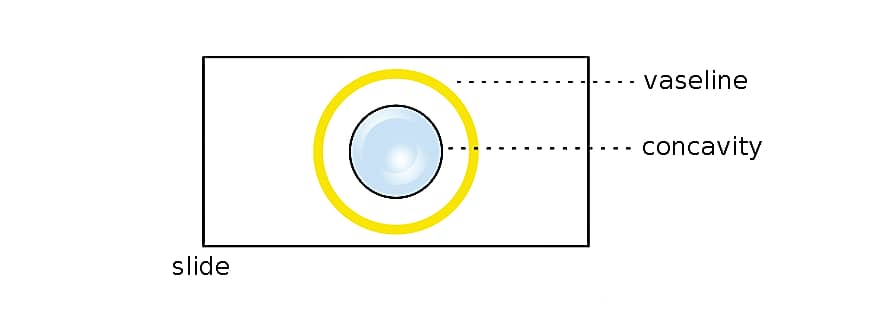Hanging Drop Preparation is the useful technique employed in the laboratory for the microscopic examination of living microorganisms (viable microorganisms), especially the bacteria without staining them and to see their motility due to flagella. Flagella is the organ of locomotion in Bacteria and various types of arrangement of Flagella is found in the bacteria which causes the variation in motility of bacteria as some a highly motile and some are slightly motile.

PRINCIPLE OF HANGING DROP PREPARATION
The Hanging drop preparations is a special type of Wet mount in which a drop of broth culture of microorganism or bacterial suspension to be analyzed is placed on a glass cover slip which is encircled with a stick substance, preferably the Petroleum jelly and this cover slip containing the specimen is promptly inverted over the special type of Glass slide known as Cavity slide or depression slide containing a well (depression or cavity) in order that the drop hangs freely on the cover slip in the concavity of slide and the Petroleum jelly forms a seal that prevents the evaporation of the specimen and preserves it temporarily.
The hanging drop preparation is then examined under the microscope to check the motility of the organism, preferably under reduced light to enhance the visibility and for better contrast. This method is ideally used in the laboratory to check the motility of Bacteria.
REQUIREMENTS FOR HANGING DROP PREPARATION
- 12-hour old broth culture of specimen or Bacteria suspension
- Hanging drop slide / Cavity Slide
- Glass Coverslips
- Vaseline / Petroleum Jelly
- Matchsticks
- Wax Marking Pencil
PROCEDURE OF HANGING DROP PREPARATION
⇒ Clean and flame the hanging drop slide/cavity slide and place it on the table with concavity/depression side up & apply a thin layer of vaseline or Petroleum jelly around the concavity.

⇒ If you are using a routine microscopic glass slide then apply the paraffin ring or a ring of adhesive tape to make circular concavity on the slide. This step is not needed if a glass slide with depression is available.
⇒ Now, Clean a coverslip and apply petroleum jelly or vaseline on each of the four corners of the coverslip, using a matchstick.
⇒ Place the jelly coated coverslip on a clean paper with the petroleum jelly side up.
⇒ Transfer one loopful of broth culture or Bacterial suspension in the center of the coverslip.

Note: The drop should not be too large or too small and the size of the drop should be adjusted as per the dimensions and depression of the coverslip and Cavity slide, respectively.
⇒ Now, Place the depression slide onto the coverslip, with the cavity facing down so that the depression covers the suspension drop.
⇒ Press the slide gently to form a seal between the coverslip and the slide to prevent the evaporation of specimen.

⇒ Lift the preparation and quickly turn the hanging drop preparation coverslip up so that the culture drop is suspended in the concavity of Depression slide.

⇒ Examine the preparation under low power objective lens, with reduced light and close the diaphragm of the microscope. Focus the edge (appeared as irregular lines crossing the field) of the slide using the coarse adjustment knob.
⇒ Without moving the microscope tube, switch to high power objective lens and examine the preparation again. Adjust the focus with fine adjustment know until the edge of the drop can be seen.
⇒ Place a drop of immersion oil on the coverslip and examine the preparation under the oil immersion objective lens (100X).
OBSERVATIONS OF HANGING DROP PREPARATION
Observe under the microscope by Focusing the edge of the drop and carefully find the tiny objects which are bacteria. The bacterial cells will appear as either a dark or slightly greenish tiny bodies, very small rods (bacilli) or spheres (round or cocci).
The cells will appear larger and larger as you increase the power of objective lens but remember to carefully observe the edges of the drop for tiny organisms.
You can also adjust the light of the microscope by using the diaphragm lever to maximize the visibility of the cells & to develop better contrast. Observe the bacterial cells carefully and note down their morphology & grouping and also determine whether the organisms are truly motile or not.
Brownian movements and passive drifting off of all the organisms (motile & non-motile) are usually visible in the Hanging drop slides but on precise and accurate examination of the Hanging drop preparation, you will be able to differentiate the Brownian movement with true motility of bacterial cell.
Brownian movements: These are the oscillatory movement at a nearly fixed point and possessed by all the small bodies which are suspended in fluid and due to irregularities in their bombardments by molecules of water.
PRECAUTIONS TO BE TAKEN WHILE PERFORMING HANGING DROP PREPARATION
⇒ The use of PPE (Gloves, Mask, Lab coat / Gown, Safety goggles etc.) is mandatory as you are going to deal with highly infections viable microorganism.
⇒ Use the young culture of the organism as in the old cultures, most probably the organisms are dead.
⇒ Put the appropriate size of the drop onto the cover glass which should not be too large or too small and hang freely in the concavity of depression slide.
⇒ First, observe under the low power objectives & then switch to high power & oil immersion objective for easy findings.
⇒ Adjust the diaphragm accordingly for better contrast which minimizes the errors in observations.
⇒ Don’t misunderstand the passive drifting and Brownian motion of the bacterial cell with the motility. Observe carefully before reporting as Motile or Non- motile organisms.

Hi, I’m the Founder and Developer of Paramedics World, a blog truly devoted to Paramedics. I am a Medical Lab Tech, a Web Developer and Bibliophiliac. My greatest hobby is to teach and motivate other peoples to do whatever they wanna do in life.